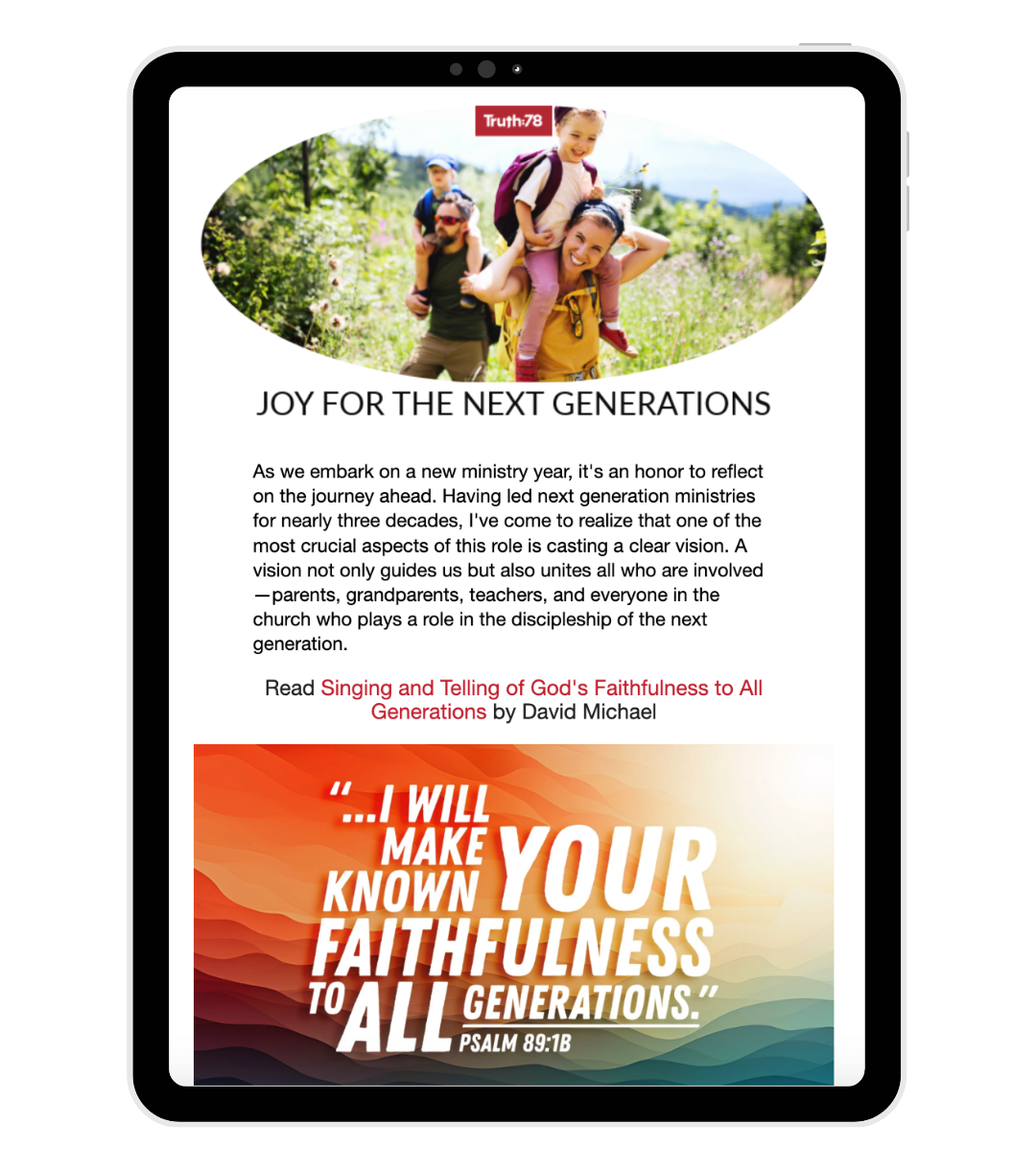At Truth78, we talk a lot about the need for “biblical literacy” for the next generation. But biblical literacy is more than just acquainting children with as much of the biblical text as possible. Yes, reading through the entire Bible by the time they reach adulthood is a worthy goal for our children. But we must also train them in how to study the Bible. What’s the difference, and why is it important?
Joe Carter has provided a really helpful article on this topic.
…while encouraging our children to read the Bible and teaching them how to do it well are necessary tasks, they are not sufficient for spiritual development. We also need to teach them how to study Scripture so that they “may be thoroughly equipped for every good work” (2 Tim. 3:17).
…Two key differences between reading and study are pacing and focus. When we read the Bible, we generally do so at the quickest pace our comprehension will allow. We may consume large chunks at one time, such as reading an entire book. We also look for the broad outlines of the text to know what it’s about or to determine how it fits into the larger scope of God’s Word. Bible reading precedes Bible study because it provides the broad perspective we need before we narrow in on specific passages.
When we study the Bible, though, we slow down to focus on the meaning of the text. We read and reread shorter units of text and spend more time focusing on specific words, clauses, verses, and paragraphs….
The essence of Bible study is asking questions of the text to discover the meaning God intended. Of the many profitable ways to study the Bible, one that everyone from preteens to Old Testament scholars has found to be particularly helpful, is the inductive Bible study method. The inductive study method is an investigative approach to the Bible using three basic components:
Observation: What does the text say?
Interpretation: What does the text mean?
Application: How does the meaning of the text apply to life?
(“How to Teach Your Kids to Study the Bible,” The Gospel Coalition)
I believe his emphasis on training children to read and study the Bible is really helpful for both home and church. Too often, the “study” element is missing from children’s and youth Bible resources and curriculum. Many times, stories or texts are simply read to (or summarized for) the students, followed by an explanation from the teacher. Or biblical truth is presented through creative storytelling, media, and other “hands-on” or image-based means. All may be useful to a certain extent. But consider this observation from David and Sally Michael:
It will be very difficult for children to become serious students of the Word if they are used to a steady diet of sound byte technology. Overexposure to sound byte technology will reap a crop of students who are incapable of serious, careful Bible study, who will not be equipped and competent for every good work.
We must impress on the next generation the discipline of Bible study—careful observation of the text; thoughtful, objective interpretation; and appropriate life-application—as well as the value of meditating on the Word “day and night” and memorizing Scripture.
Questions to Think About in Your Own Context
- Are we careful to emphasize and use the Bible as our main teaching tool, rather than media and sound byte technology?
- Does the curriculum we use encourage and help students to actually interact with the text?
- Are the students being intentionally trained in age-appropriate inductive Bible study methods?
- Do we have age-appropriate goals in place for assessing our students' Bible study skills?
- Are our teachers adequately trained in the use of inductive Bible study methods?
For Further Practical Help
Free Resource
Product







